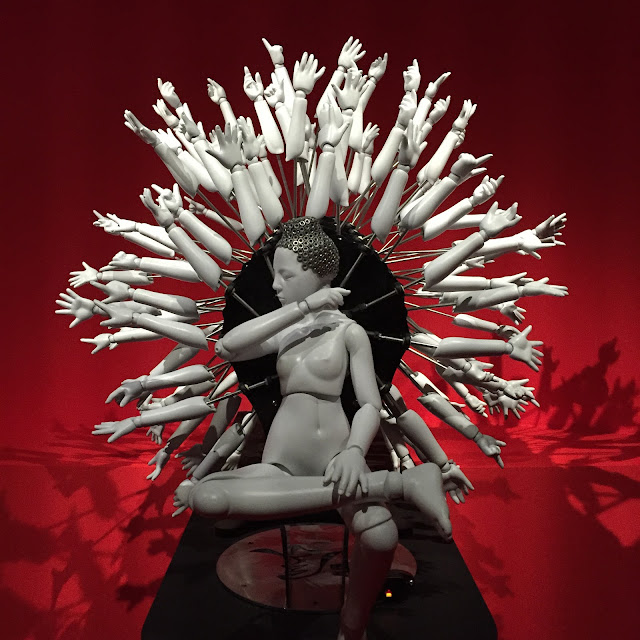L'humain qui vient
16, 17 et 18 novembre 2022
UNESCO, Paris
Pour célébrer la Journée mondiale de la philosophie 2022, Le Fresnoy — Studio national des arts contemporains et l’UNESCO organisent, en partenariat avec Les Rencontres philosophiques de Monaco, du 16 au 18 novembre 2022, au siège de l’UNESCO, à Paris, un colloque et une exposition sur le thème «L'humain qui vient».
Dans un monde hyper-technologisé, le concept même d'humanité est en constante évolution. Qu'appelons-nous humain aujourd'hui ? Que continuons-nous d’appeler humain malgré l'évolution historique évidente et l'avenir incertain auquel nous sommes confrontés ? Assistons-nous à une transfiguration si radicale que sa propre définition, en plus de l'horizon humaniste, est dépassée ? Comment envisager les nouvelles figures de l'humain à venir ?
Qu’appelons-nous aujourd’hui l’humain ?
L’« humain » aura toujours été défini à partir de son évolution et de son devenir historique propre. Mais notre contemporanéité lui aura-t-elle infligé un bouleversement tel qu’il, l’« humain », déborde et dépasse son devenir historique lui-même ? Autrement dit, nous tenons-nous aujourd’hui devant une métamorphose, un « point d’inflexion », où l’« humain » se voit radicalement transformé et porté vers un autre que lui-même – tout autre que la définition, la détermination, l’identité déployées dans et par son histoire propre ? Assistons-nous aujourd’hui à une transfiguration telle que la distinction traditionnelle entre l’être et le devenir de l’humanité se voit résolument surpassée ? La figure de « l’humain qui vient » excède-t-elle – et en quel sens ? – la détermination essentialiste et humaniste de l’humain ? Et plus en avant, comment se confronter aujourd’hui à cette figure inédite de l’humain qui vient ? D’ailleurs, n’aurons-nous pas affaire à une multiplicité de figures de l’humain qui viennent ?
C’est là une exigence à la fois politique et philosophique, certains y ajouteraient un devoir éthique : penser en direction de ces manifestations inédites de l’humain et ainsi des humanités. Depuis quel lieu et à partir de quelle loi pouvons-nous incarner cette exigence philosophique et politique ? Comment cette profonde altération de l’humain modifiera-t-elle notre pensée et quelles seront les conséquences politiques de cette mutation dans l’histoire de l’humanité ? Ces questions philosophiques, politiques, éthiques sont également centrales aux travaux d’artistes, de cinéastes et d’architectes. Leurs approches différentes, leur façon singulière de penser en images, et de réfléchir les lieux et les espaces de l’expérience, ouvrent un regard complémentaire sur notre contemporanité.
Il a paru capital, sur une question aussi importante, de rassembler un ensemble de champs variés de la connaissance, afin d’apporter un éclairage multi-disciplinaire et multiculturel, une dimension que l’UNESCO pouvait idéalement favoriser.
EXPOSITION
Pendant toute la durée du colloque, une exposition sera présentée en salle Mirő, elle rassemblera les oeuvres photographiques de Hugo Deverchère, Stéphanie Roland et SMITH, ainsi que les films de Moufouli Bello, Emanuele Coccia, Fernando Colin Roque, Bianca Dacosta, Nicolas Gourault, Louis Henderson, OV, Momoko Seto, Hadrien Tequi, Yuyan Wang, Agata Wieczorek, produits par Le Fresnoy – Studio national des arts contemporains.














